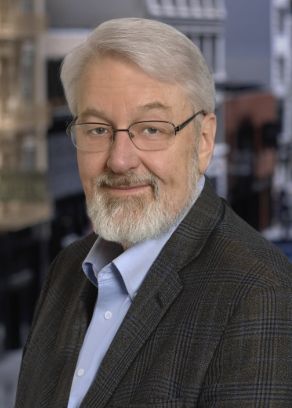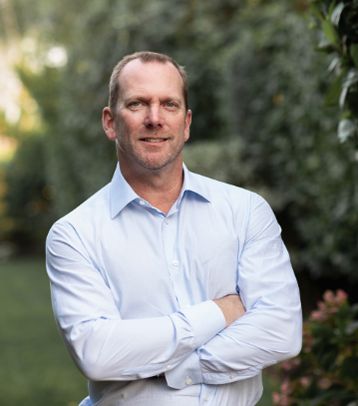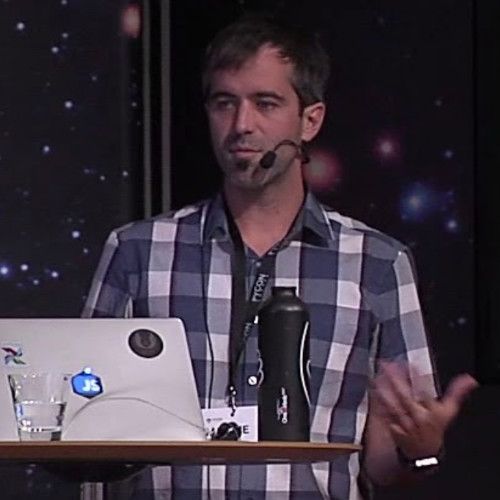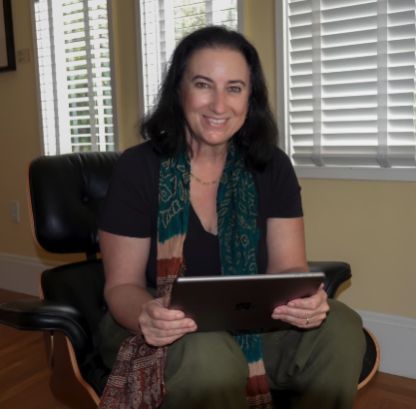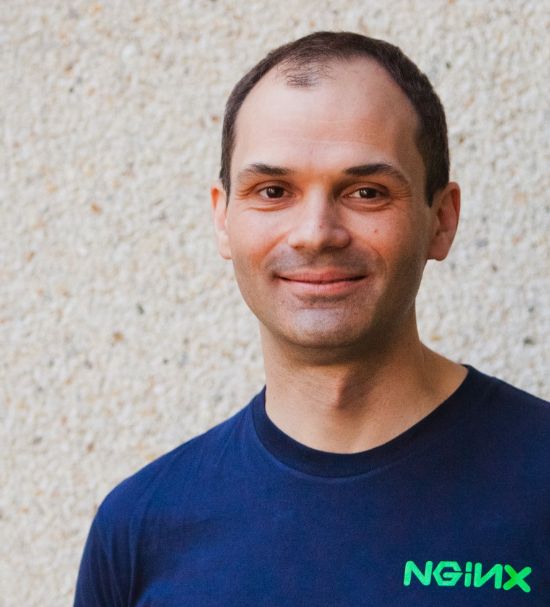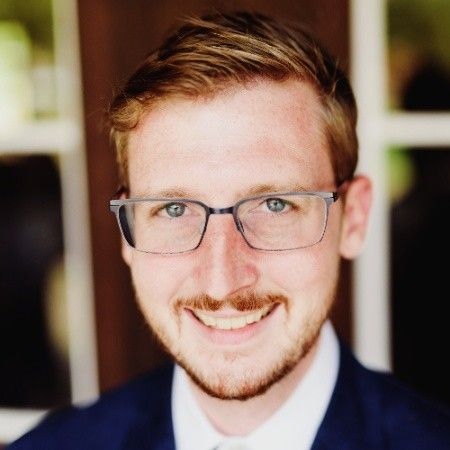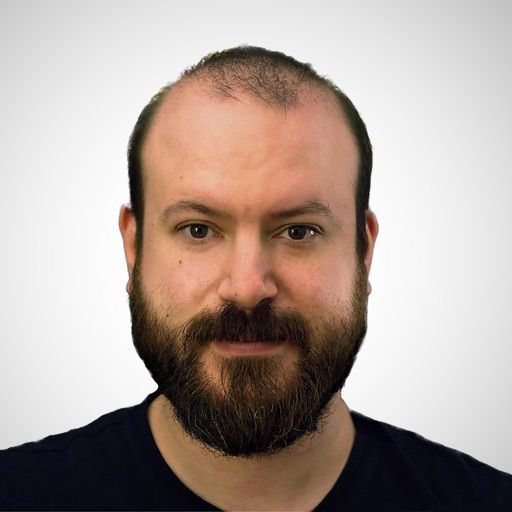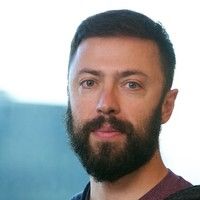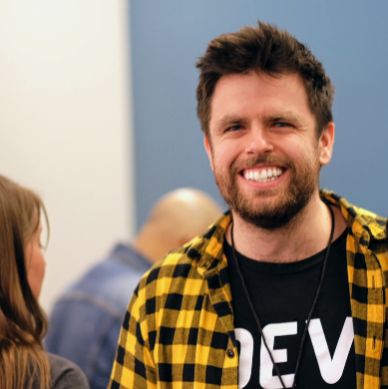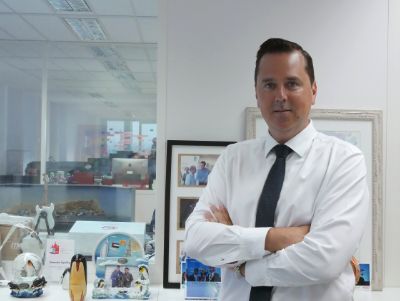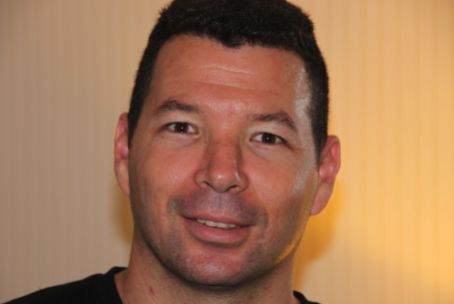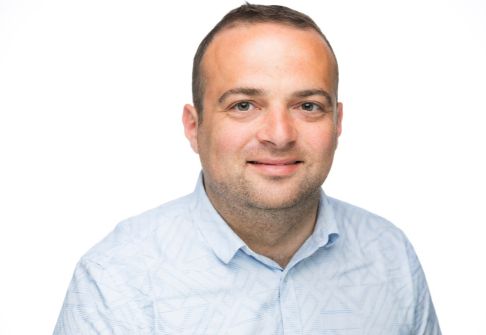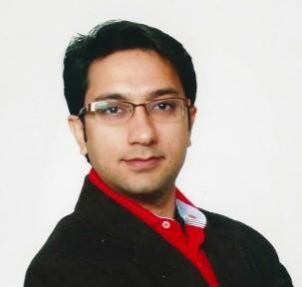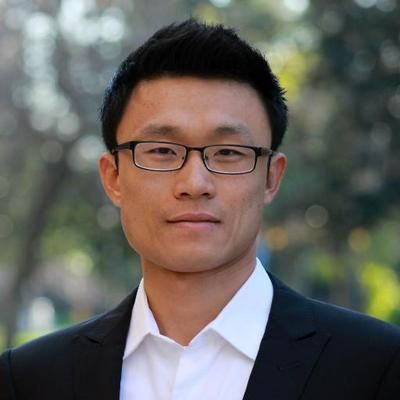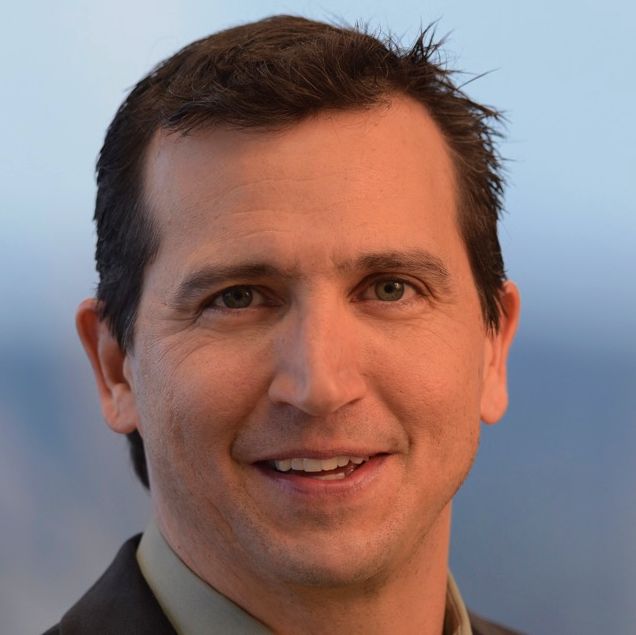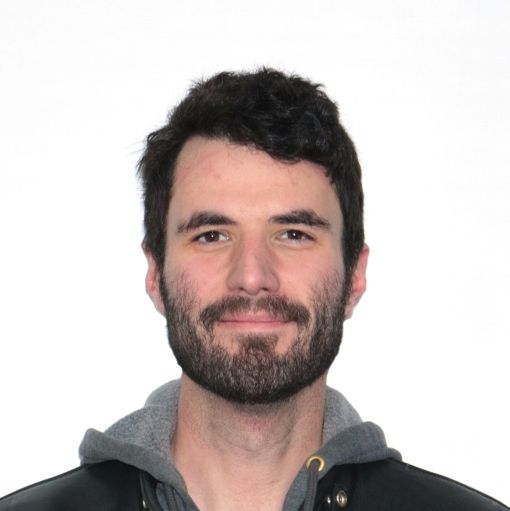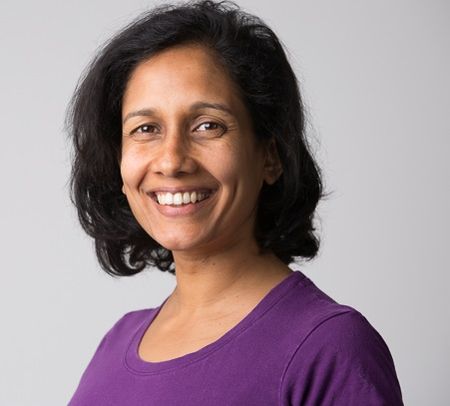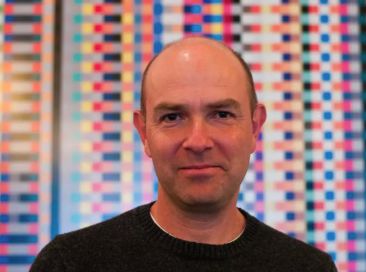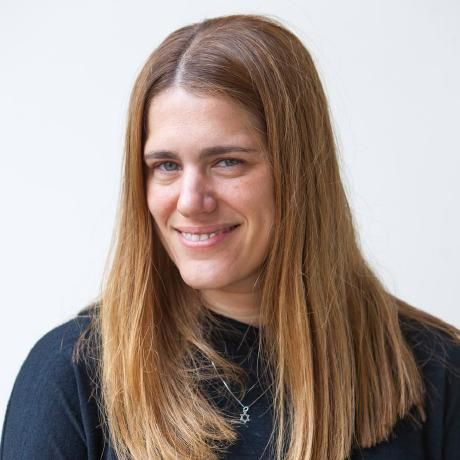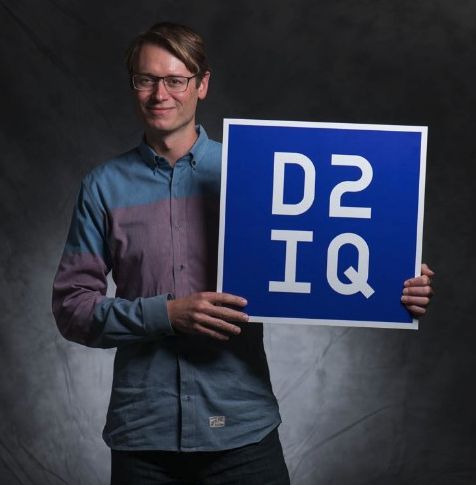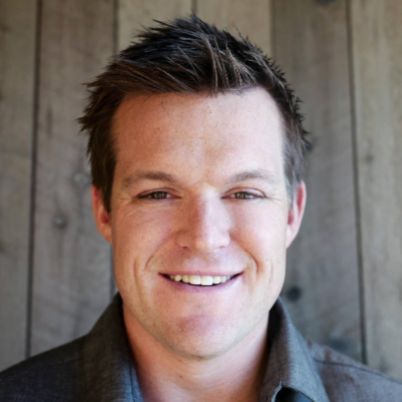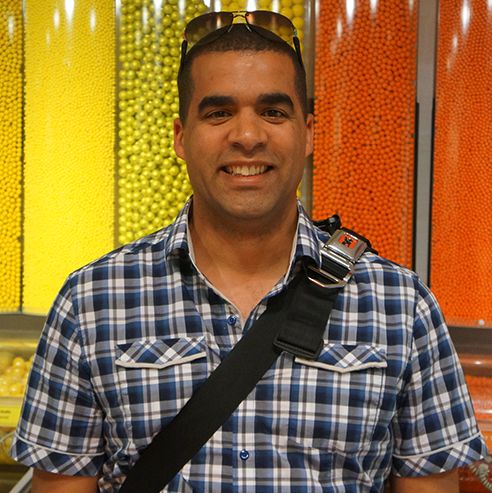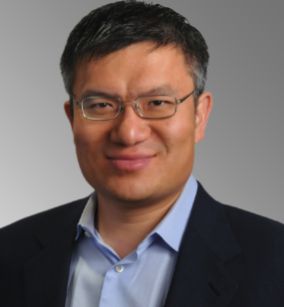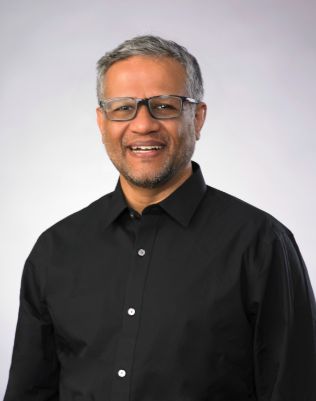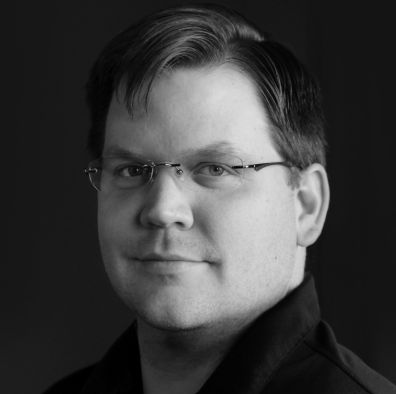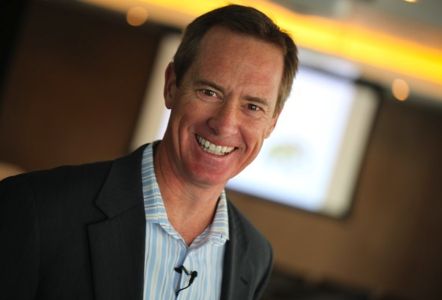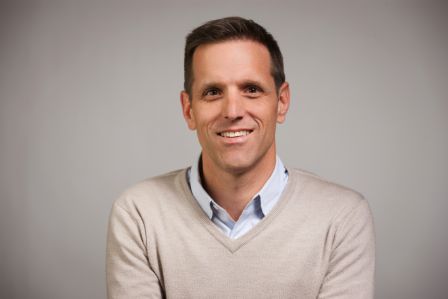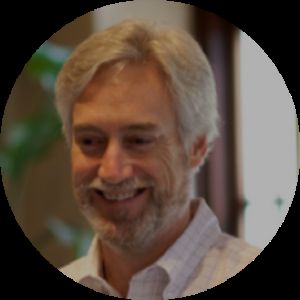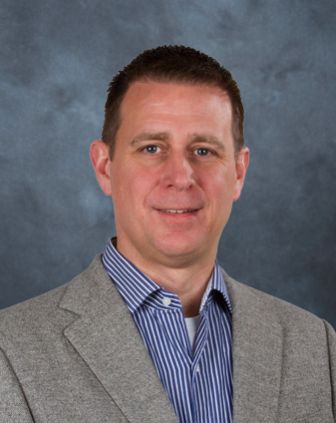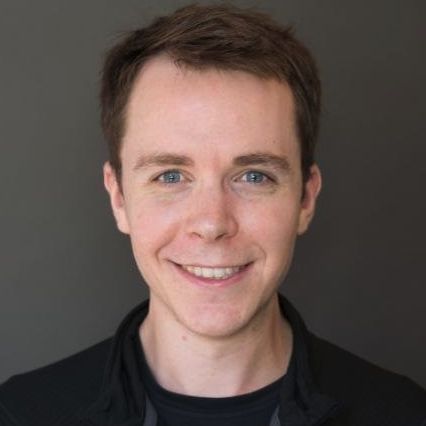NGINX、MongoDB、NPM 开启 Open Core Summit 新篇章
昨天我们浏览了 Open Core Summit 的第一天的议程,可以说是"大佬"云集,RetHat 关于核心业务开源的许可证 Topics,蓝厂 IBM 对云计算、开源云在交付服务中的实践也给我们带来了不少启发
如果说昨天是老牌大厂的大秀,第二天的看点便是我们所熟稔的开源大厂的“百花齐放”,NGINX 的开场秀“Thriving with open core when open core was taboo”奠定了整个大会第二天的基调:“机遇与挑战共存,企业如何兼得开源和商业化”,由于第二天的大会一共有 63 个议题,我们将分成:商业篇( Business Model )、开源生态篇( Ecosystem / Community )、工程篇( Engineering & Licensing & Product Development )和企业篇( Enterprise & Sales / GTM & Talent / Hiring / Culture),就是本文所在的公众号文章列表。
下面进入第一篇——《Business Model》
Business Model
本次商业篇一共有 11 个议题,正如 NGINX 联合创始人的 Topic ——《Thriving with open core when open core was taboo》中所说的那般,面对市场时过早地 Open Core 是一个极大的风险,所幸的是他们成功了,当然,Cloudera 在 Topic ——《Senior Counsel: Product, Intellectual Property, and Privacy 》提及的开源业务和公司管理的关系及开源许可证的选择也是企业选择 Open Core 需考量的点。
本篇目录
- PANEL - OSS Business Model: From the Past to the Present - Mark Radcliffe, DLA Piper (Moderator)
- Purpose before profit: why business values mean more than valuation - Martin Dougiamas, Moodle
- The Old, The Now and The New: The Evolution of Open-Source Business Models and What’s Next - Kelly Herrell, Hazelcast
- Booting up a COSS SaaS company in 2019 - Maxime Beauchemin, Preset
- Panel: Free as in Beer: Pricing & Delivering Open Source to Enterprise - Joe Ruscio, Librato (Moderator)
- Open Source Opportunities in Telecom Industry - Boris Renski, Mirantis
- Open Core and Open Licensing - Heather Meeker, OSS Capital
- Thriving with open core when open core was taboo - Andrew Alexeev, NGINX, Inc.
- Senior Counsel: Product, Intellectual Property, and Privacy - John Gould, Cloudera Inc.
- Open Source Programs: Best Practices - Kevin Wang, FOSSA
- Redefining Monitoring by Moving to the Edge - Dimosthenis Kaponis, Netdata Inc.
PANEL - OSS Business Model: From the Past to the Present - Mark Radcliffe, DLA Piper (Moderator)
Business Model
Three very experienced open source CEOs will share their experience of developing and implementing business models for their open source companies. They have all worked for multiple open source companies and will discuss how the underlying software products can also effect the choice of a business model.
The presentation will take the form of a fireside chat, moderated by Mark Radcliffe Global Chair of the Open Source Practice Group at DLA Piper.
作为商业篇的开场秀,三位有经验的 CEO 相比能带来一个非常棒的演讲,拭目以待他们剖析软件是如何商业模式的抉择,及他们的成功的开源商业模式实践
Purpose before profit: why business values mean more than valuation - Martin Dougiamas, Moodle
Business Model
Moodle is a 20-year-old open source learning management system that has become the mainstream product in the industry, used by 60% of Universities around the world, as well as a lot of schools and businesses.
This session will cover some of the history but will in particular deal with the unique business models and values that support this project to keep it sustainable and secure in the face of aggressive opposition.
看摘要我们能从服务学校,开源二十载的 Moodle 公司学到不少开源的经验…
The Old, The Now and The New: The Evolution of Open-Source Business Models and What’s Next - Kelly Herrell, Hazelcast
Business Model
Over the past three decades, open-source shattered the proprietary software business model with what appeared to be an unstoppable force. Recent history has seen some cloud providers asserting their market power at the expense of open-source vendors, while others have embraced the vendors as commercial partners. Meanwhile, edge computing and IoT are gaining steam, changing the dynamics yet again.
Kelly Herrell, CEO of Hazelcast, has 20 years of experience driving open-source companies with multiple exits. His talk covers the transformations of open-source commercial models and discusses emerging dynamics and how they could again drive transformations within the business of open-source.
“has 20 years of experience driving open-source companies with multiple exits” 这个描述有点意思,完全体现了新旧交替,开源模式转型给公司带来的“商机”,希望能给最近云提供商以牺牲开源供应商为代价来占领其市场力量行为带来一些指引。
Booting up a COSS SaaS company in 2019 - Maxime Beauchemin, Preset
Business Model
I founded Preset early 2019 to offer services in and around Apache Superset, an open source analytics platform that I started while I was at Airbnb in 2015. This talk is a tale of the journey so far, from growing an open source community within a sponsoring company, to getting a startup off the ground.
I’ll be talking about the challenges Preset has faced in its first year, and some of the decisions we’ve made and solutions settled on.
又一个开源故事
Panel: Free as in Beer: Pricing & Delivering Open Source to Enterprise - Joe Ruscio, Librato (Moderator)
Business Model
Most developer startups aim to build a community of loyal developers who are not only customers, but also contribute to the community’s growth and independently evangelize the product. Not surprisingly, many founders choose open source models to achieve this. But what happens when companies need to cross the chasm into enterprise sales?
What does it mean to truly package, price and sell an OSS product into the enterprise? Whether you’re considering dual licensing, SaaS, add-ons or other services as a means to open source commercialization, join this panel of founders from Librato, Replicated, Apollo and Hasura as they discuss their own experiences building businesses alongside open source communities.
Librato 提及的“社区共建”和 Nebula Graph 倡导的结合开源社区力量用于产品开发演变,共同推进图数据库发展的理念不谋而合,但是遇到商业化或者说变现时难免会遇到一些问题,不知道这个议题带来多少值得参考的 Tips。
Open Source Opportunities in Telecom Industry - Boris Renski, Mirantis
Business Model
Telecom industry is a “private club” closed to start-ups. It is dominated by a handful of multi-billion dollar vendors that can endure multi-year sales cycles. Exit multiples are crappy. VCs stay away from Telco. But should this be the case? Telecom industry today is at the precipece of change, driven by a trifecta of technology trends - Network Function Virtualization (NFV), 5G and Edge Computing. Unlike Enterprise infrustructure sector where open source models are getting killed by public cloud everything-as-a-service approach, Telco industry is evolving into the land of opportunity for open source start-ups. At Mirantis today 70% of our business comes from Telecom industry with over 25,000 physical servers under support subscription for our software. In this session I will share how we got there and what are the near term opportunities for building open source start-ups in the Telecom space.
不知处于变革边缘的电信业和网络功能虚拟化(NFV)、5G和边缘计算能擦出什么样的火花。
Open Core and Open Licensing - Heather Meeker, OSS Capital
Business Model
Open core uses open source licenses to create a community around the product core. But how do you license your enterprise layer? Come learn how to “license the frosting” in ways that will maximize sales and community participation.
Thriving with open core when open core was taboo - Andrew Alexeev, NGINX, Inc.
Business Model
When NGINX the company had just started, the general notion was “you can’t monetize an open source web server.” We had to productize our project and fast. Searching for a product/market fit, we eventually chose open core as the business model for our commercial product. A little bit early to the market, and with “open core” being almost a taboo word back then, here’s what we did.
NGINX 的这个演讲为何时 Open Core 提供了一种可行参考,不知如果当初 NGINX 更早或迟点 Open Core 会不会拥有被 F5 收购这种“风光”结局。
Senior Counsel: Product, Intellectual Property, and Privacy - John Gould, Cloudera Inc.
Business Model
Developing an open source business model requires tight coordination between both the business owners and legal. Clear goals need to be defined, at least one of which should be “what is our path to revenue.” The selected open source license(s) for the products should align with these goals, and business, market, and community expectations need to be managed.
This session will discuss some challenges and considerations for developing an entirely open source business model from scratch. We will discuss managing business misunderstandings and expectations, license selection criteria, community perception, and tensions between different legal documents, such as between an open source license and service agreement.
开源许可证和服务协议的选择,的确是开源比较关心的一个话题,不知道这个 Topic 会从哪个角度讲解这个话题。
Open Source Programs: Best Practices - Kevin Wang, FOSSA
Business Model
Over 80% of the code we ship in our software products today is from open source and third parties. Open source has become a critical supplier to modern business, yet the traditional enterprise has few tools to deal with the new types of complexity, scale and speed that comes with modern open source usage.
In this talk, Kevin Wang (CEO @ FOSSA) outlines a set of frameworks and best practices developed from leading software companies and OSPOs (Open Source Programs Offices) on managing open source at the pace and scale of modern development. By the end of this talk, you will learn a set of tools and strategies to help implement a strategy to help your company succeed at open source consumption.
80% 的开源代码构成了我们现在接触的大多数软件,其实变相来说,开源也减少了很多工程师写代码的工作量,如何将开源和业务相结合,的确是一个值得一听的话题。
Redefining Monitoring by Moving to the Edge - Dimosthenis Kaponis, Netdata Inc.
Business Model
Netdata emerged from the need for a very high performance, high resolution, zero configuration and instantly usable monitoring solution; in the process it became a very popular open source project with more than 40K stars on Github, 500K docker pulls per day and used by millions worldwide.
Today, it’s entering its next phase of evolution. This talk will cover its history, design philosophy and strategy and our ongoing efforts to provide more value and thorough insights for modern operating environments — from low powered IoT devices, to bare metal fleets, all the way to Orchestrated Container constellations of ephemeral nodes.
40K Stars 的开源项目可谓是 GitHub 开源 star(明星),对监控这块的业务有兴趣的小伙伴可能会得到不少的启发
Ecosystem / Community
结束商业篇,我们来点轻松的开源生态搭建,一个社区最重要的是氛围,如何搭建这么一个开源氛围的确是各开源项目需要学习的地方。本次生态篇有 16 个议题,相对热门许是被很多人后病的 npm 带来的“npm and Open Source - Isaac Schlueter, npm, Inc.” 及 Pivotal 这个“富二代”演讲的 “Public Clouds - Friend or foe of COSS”。
本篇目录
- npm and Open Source - Isaac Schlueter, npm, Inc.
- Starting a contributor movement - Alex Weidauer , Rasa
- The real costs of Open Source Sustainability - Vicky Brasseur , Juniper Networks
- The Self Interested case for Supporting Open Source - Zachary Smith, Packet
- The Ying and Yang of Open Source Business and Community - Julia Schottenstein, NEA; David Cramer, Sentry; and Sameer Al-Sakran, Metabase
- Bringing Open Source to the People - Ben Halpern, DEV
- Open Source Software Assurance: the best of breed! Free Softwares available as COSS but without the COST of COSS! - Alexandre Zapolsky , LINAGORA
- Open source strikes (the cloud) again - Dor Laor , ScyllaDB
- The city guide to open source - Devon Zuegel , GitHub
- Public Clouds - Friend or foe of COSS - Eli Aleyner, Pivotal Software
- “Opening” Wall Street: challenging the myths and seizing the opportunities of Open Source in Fintech - Gabriele Columbro, FINOS
- Bits vs Outcomes - Varun Talwar
- Panel: Leading COSS goes Global - Kevin Xu, OSS Capital (Moderator)
- An executive’s role in fostering an OSS community - Thomas DeMeo, NodeSource
- Is this conference a good idea? - Kyle E. Mitchell , Independent Attorney
- The Future of CI/CD & Open Source - Tracy Miranda, CloudBees
npm and Open Source - Isaac Schlueter, npm, Inc.
Ecosystem/Community
Isaac will discuss the role that npm’s open source projects play in the unique JavaScript ecosystem, and share where the project is going and what this means for the JavaScript ecosystem.
虽然被很多人诟病,但是 npm 在开源生态和社区搭建这块的经验的确值得人一鉴。
Starting a contributor movement - Alex Weidauer , Rasa
Ecosystem/Community
Contributors are at the heart of every open source community. However, the larger the community grows, the harder it is to keep in touch and engage contributors. This talks explain how a contributor program can help turning your contributors in a movement to help further grow your project.
Contributor & Committer 是开源社区的两个重要角色,看 Rasa 是如何开启 Contributor 模式。
The real costs of Open Source Sustainability - Vicky Brasseur , Juniper Networks
Ecosystem/Community
In 2016 Nadia Eghbal released “Roads and Bridges: The Unseen Labor Behind Our Digital Infrastructure,” which shines a light on how few people maintain the software that underpins a large amount of the internet and the services that run on it. The software world has rallied around Open Source Sustainability. Going with what they know, folks mostly focus on paying FOSS developers. Funding drives were funded. Foundations were founded. Startups started up. Venture capitalists ventured that capital. Money isn’t the only part of sustainable FOSS projects. Sustainability is a multi-faceted concept that can’t work if people focus on only one of its many elements.
This talk will: * Review literature around the concept of sustainability * Propose a definition that more accurately details what “sustainable” means to FOSS * Provide tips for starting with your FOSS sustainability efforts
The Self Interested case for Supporting Open Source - Zachary Smith, Packet
Ecosystem/Community
Packet has a “blank check” initiative to passively support open source. Hear the defense I tell our board on why this low effort approach to Open Source is the right one for us.
The Ying and Yang of Open Source Business and Community - Julia Schottenstein, NEA; David Cramer, Sentry; and Sameer Al-Sakran, Metabase
Ecosystem/Community
Hear from the CEO of Sentry, David Cramer, and the CEO of Metabase, Sameer Al-Sakran, how they built venture backed businesses off popular open source projects. Julia Schottenstein, Principal at NEA, and investor in both companies, will moderate the discussion.
通过开源项目建立风险投资,也许能给我们带来一些新的启发。
Bringing Open Source to the People - Ben Halpern, DEV
Ecosystem/Community
Open source has changed everything about software development. It is at the core of everything we do. But it remains painfully niche in the grand scheme of things. Few user-facing technology platforms rely on transparency and collaboration with the actual users they affect. Few open source technologies are high-level enough to be opinionated about trust and safety.
This is our journey of bringing open source to the mainstream, and using it to solve human issues—not just technical ones. This is as challenging as it sounds—but it’s also liberating and it has opened doors every step of the way.
"Open source has changed everything about software development. " 开源的确改变了软件开发的固有模式。
Open Source Software Assurance: the best of breed! Free Softwares available as COSS but without the COST of COSS! - Alexandre Zapolsky , LINAGORA
Ecosystem/Community
LINAGORA is one of the leading european Open Source Software Company. We believe in Free and “Libre” softwares. We also promote & support more ethical, more inclusive & more sustainable digital technologies. We call this ambition, “the 3rd Digital Way” : we built Open Platforms with a privacy by design focus, interoperability & no vendor lock-in.We offer our customers an ability to take advantage of Free and “Libre” softwares and to benefit from an innovative business model not based on users or servers counts but that is a flat annual fee.
Since 2000, LINAGORA has successfully provided both support and expertise on its own software provided under Open Source licences (mainly aGPL V3) and on a complete range of 400 Open Source Software, through a unique service called Open Source Software Assurance (OSSA). Respect of Free and Open Source software doesn’t mean cheap company. With its OSSA, LINAGORA has demonstrated it is possible to build strong recurrent economic model based on a large part of Annual Recurring Revenue (ARR).In this talk, the CEO of LINAGORA, Alexandre ZAPOLSKY, will share his experience, explain LINAGORA’s business model, use cases and shown how the Free and “Libre” softwares model bring more business opportunities, make higher community empowerment, allow to deliver fastest innovation, simplify IP & legal issues… and why it is a stronger and a better model for every customer.
LINAGORA 开放源码软件认证(OSSA)的独特服务,无疑为 Open Core 提供了一种新的可行方案。
Open source strikes (the cloud) again - Dor Laor , ScyllaDB
Ecosystem/Community
The rise of the cloud and as-a-service approach caught open source by surprise. Over the past couple of years, we’ve seen other companies than Red Hat succeed and even go public. However, in a short amount of time the open source business model is at risk again due to as a service approach and many rising OSS companies added licensing limitations (MongoDB’s SSPL,…) to mitigate the OSS cloud challenge. This step is not enough as with the cloud scale, both Microsoft and AWS provide MongoDB compatible APIs and more over, the OSI renders the new licenses as non open source. It is a lose:lose strategy.
At ScyllaDB, we chose to reverse the direction and go after the cloud. OSS used to disrupt close source products by offering an alternative. The session will cover the new Scylla Alternator project, a new open source project by ScyllaDB that aims to democratize a major cloud benefit and make it approachable for everyone.
又一个云计算的相关话题,云计算不愧是本届 Open Core Summit 的热门话题。
The city guide to open source - Devon Zuegel , GitHub
Ecosystem/Community
What can cities teach open source about governance, funding, and managing limited resources?
Public Clouds - Friend or foe of COSS - Eli Aleyner, Pivotal Software
Ecosystem/Community
Are public clouds just vultures to Commercial Open Source companies, taking their technology and giving little in return? In my role at Pivotal I have a first-hand seat in understanding how Public Clouds interact with Commercial OSS companies, the dynamics involved and more importantly:
(1) how Commercial OSS companies can build significant business on the backs of Public Clouds,
(2) The dynamics and power that COSS companies have with Public Cloud providers (spoiler: COSS have more power than they realize) and
(3) how to position to take advantage of the immense opportunity.
In this session we’ll talk game-theory, power-dynamics, objectives, positioning all in effort to help both COSS companies and OSS communities to pull jujitsu moves on Public Cloud providers to turn potentially competitive situations to win-wins for all involved.
Pivotal 这个不折不扣的 “富二代” 谈论起 OSS 社区想必是另有一番风味。
“Opening” Wall Street: challenging the myths and seizing the opportunities of Open Source in Fintech - Gabriele Columbro, FINOS
Ecosystem/Community
Financial institutions and fintech vendors are amongst the larger producers of software and employers of highly talented developers worldwide. Yet while Wall Street has been consistently increasing its consumption of open source, this interactive-by-nature ecosystem has been largely missing out on the opportunities presented by collaborating, contributing and building a business model around open source. In the context of a massive generational and technological evolution, with cloud and decentralized technologies rapidly taking over the industry, the opportunity for an open fintech is huge for financial institution decision makers, for developers and generally for each one of us, downstream users of the financial services complex.
In this session, Gab, Executive Director of the Fintech Open Source Foundation, the first and only open source Foundation solely focused on Financial Services, will discuss the state of open source in the industry, discussing trends, challenges, opportunities, real life case studies of collaboration and extending a call for participation to the extended ©OSS community.
金融一直是相对闭源的领域,不知 FINOS 如何讲解该话题。
Bits vs Outcomes - Varun Talwar
Ecosystem/Community
Session Details Coming Soon
Panel: Leading COSS goes Global - Kevin Xu, OSS Capital (Moderator)
Ecosystem/Community
Panelists:Haoyuan Li , AlluxioCesare Garlati, prpl Foundation
会议介绍中没提及,Kevin Xu 也是 PingCAP 全球战略和运营总经理,作为在国内拥有数一数二成功开源经验的 PingCAP 不知在本次圆桌会谈给大家带来什么惊喜。
An executive’s role in fostering an OSS community - Thomas DeMeo, NodeSource
Ecosystem/Community
Executive leadership is needed to support OSS communities. But to really thrive and grow, it needs the right exec sponsorship for the right reason, with the right expectations across the company. That all begins with understanding the needs of the developer community, their motives, and the realities of their world. Delivering a win-win scenario for all sides is made easier when you understand the factors, know where to start and can keep the dialog open.
This session will share some insights into what works and what doesn’t from an executive point of view. Bring your perspective and insights and share them during the open Q&A session so that we may all expand our understanding of dynamic open source communities.
如何壮大开源力量的确是企业需要关注的一个话题。
Is this conference a good idea? - Kyle E. Mitchell , Independent Attorney
Ecosystem/Community
Exploring the delicate and ever more fragile link between open source and activism, open source and counterculture, and open source and freemium. Why do businesses and businesspeople want to “be” open source? What does the reality and mythology of open source history mean for those who try?
The Future of CI/CD & Open Source - Tracy Miranda, CloudBees
Ecosystem/Community
The DevOps and CI/CD industry have never been bigger. This talk talks about the evolutions in the space as we go through a CI/CD revolution.
如果对 CI/CD 或 DevOps 有兴趣的小伙伴应该不可错过这个关乎他们过去和未来的议题。
前面讲述了商业和生态,下面我们进入到工程篇,工程篇相对之前的商业片和生态篇更轻松,看看演讲者他们的开源故事。
工程篇目录
- Packets and Capture, an Open Source Journey - Loris Degioanni, Sysdig
- How We Convinced the Pentagon To Use Open Source Drones - Chris Anderson, 3D Robotics
- Lessons learned building software with a fully remote team - Corey Hulen, Mattermost, Inc.
- Truth and Lies - The Real Story Behind Open Source Communities and Commercial Success - Idit Levine, Solo.io
- Seeking the Virtuous Cycle - Kal De , Docker
- The paradox of success: How to maintain innovation performance as the codebase grows - Hans Dockter, Gradle Inc.
- Open Core Data - What Data Science can learn from Open Source Software - Tobi Knaup , D2iQ (formerly Mesosphere)
- Licensing: One Size Does Not Fit All - Gian Merlino, Imply
- Making the Cloud Era a Golden Age for Open Source - Richard Kreuter, MongoDB
- Coherent Open Source: Let’s scrap the Babel Tower of 100 Open Source licenses! - Bruce Perens, OSS Capital
- Session Details Coming Soon - Michael Cheng, Facebook
- Evolutionary Means for Revolutionary Ends: The Art of Transforming Software Systems and Ecosystems - Nick Schrock , Elementl
- From Open Source to Open Core: the hard way - Caleb Hailey , Sensu
- Open Source Product Panel - Shinji Kim , Something New (Moderator)
- Evolving Beyond Open Core, Lessons Learned - Yasmin Rajabi, Puppet
- The OSS Builder’s Journey - Daniel Lopez, VMware / Bitnami
- “COSS from the perspective of VC” Panel moderated by Joseph Jacks
- Build an Open Source Business with Kubernetes - Sheng Liang , Rancher
- Betting on SaaS - Building a Multi-Cloud DbaaS on Vitess - Jiten Vaidya, PlanetScale
- From the bedroom to the boardroom — how Gatsby grew from a fun side project to a large VC-backed open source company - Kyle Mathews, Gatsby
- Pivot? Or is it? The story of Salt from open automation to IT security. - Thomas Hatch, SaltStack
Engineering
Packets and Capture, an Open Source Journey - Loris Degioanni, Sysdig
Engineering
Session Details Coming Soon
How We Convinced the Pentagon To Use Open Source Drones - Chris Anderson, 3D Robotics
Engineering
We originally created open source drones to break the military-industrial complex monopoly. We swore we wouldn’t allow governments to weaponize our work. But then a funny thing happened. Our drones got better, faster and cheaper than the aerospace industry’s and the Pentagon came to us – not to shut us down, but to learn how we did it. This is the story of what happened next.
无人机这个新事物,和开源相结合引起了五角大楼的注意,不知当中有什么样的故事。
Lessons learned building software with a fully remote team - Corey Hulen, Mattermost, Inc.
Engineering
We have learned quite a few lessons about communication tools and how to get work done from our experience of working with hundreds of customers who use Mattermost, an open source messaging workspace, and a distributed team of 50 with hundreds of additional contributors all working remotely.
I’ll share several examples of good and suboptimal communication working with remote teams and the infrastructure and tools we found help us, our contributors and our users become more effective teams and provide clarity in their work.
和远程工作者沟通协作也是企业团队的一个可 pick 的技能点。
Truth and Lies - The Real Story Behind Open Source Communities and Commercial Success - Idit Levine, Solo.io
Engineering
The perception of what makes open source successful is wildly different than the reality. Building the best tool and open sourcing it does not mean that it will gain adoption or recognition by your end users. As a current or future founder, what should you expect and anticipate in working within open source, navigating the community and working alongside large corporations with entire engineering departments and multi-million dollar marketing budgets dedicated to open source. This is not to say that it is not possible to be successful with a new idea, the key is to go into the endeavor with your eyes open and aware of the realities at the technical, business and industry level.
This session will discuss these truths by breaking down experiences at Solo.io and others in the ecosystem to look at what happened, the dynamics at play, what we can learn from them and how to incorporate the approach into your strategy.
这个摘要里提及了制作 Open Core 策略所需要留意的点,至于是什么,就需要你看这个 Topic 了,希望你能有所收获。
Seeking the Virtuous Cycle - Kal De , Docker
Engineering
Evolving ideas and developing foundational work in the open has immense potential to create a value chain that mutually benefits customers, developers and the community at large.For an OSS rooted company or commercial enterprise that aspires to participate, contribute, and leverage this value chain, there is a virtuous cycle that must be sought and nurtured. Finding a balance between open innovation and commercial goals is hard, but viable.
Docker CTO, Kal De, will share a perspective on how Docker is approaching the challenges inherent from going from an OSS rooted startup to a commercially successful enterprise, and why from a Docker lens, this is a quest that’s worth its while for Docker, its customers and vibrant ecosystem.
Docker 如何从基于开放源码软件的初创企业转变成为商业上成功的企业,这就是 Docker 的 CTO 带来的故事,虽然现在Docker 生态充满活力而言,也许之前也有不少辛酸史。
The paradox of success: How to maintain innovation performance as the codebase grows - Hans Dockter, Gradle Inc.
Engineering
“Software is eating the world” means all innovations in the company must be channeled through software. Developers are the fuel of this innovation. But can your talented software development team perform at its full potential?The paradox of a successful software team is that as the codebase and team sizes grow - it becomes harder for developers to maintain the quick feedback cycles that are necessary to work creatively and productively.
Compared to other industries, the software development process is in the dark ages, with little data to observe and optimize the process itself. Symptoms of this problem include not only wasted time waiting for builds, CI, IDE’s to do their job, but it also saps our creative flow - limiting early feedback cycles and creating incorrect signals like flakey tests.
Join Hans Dockter, founder and CEO of Gradle for a discussion of how you can use data from across the development process to understand what breaks your codebase and how to speed up cycle times to enable developers to remain creative and innovative even as your code base grows.
一个代码库相关话题。
Open Core Data - What Data Science can learn from Open Source Software - Tobi Knaup , D2iQ (formerly Mesosphere)
Engineering
Data science and machine learning are transforming entire industries, producing results that are superior than previous approaches for a variety of problems. But achieving state of the art results is often only available to an elite few.
The reason is that modern deep learning algorithms take copious amounts of compute and storage, and therefore money, to train state of the art models. We’ve seen this movie before in software engineering. Only large companies used to have the resources to develop complex software like an operating systems. Open source fundamentally changed these dynamics. Today Linux is one of the most popular operating systems, and continues to be the foundation on which many companies build their products.
In this talk I’ll share how successful patterns from open source software may be transferred and applied to the data science space in order to democratize access to state of the art tools and data, so the entire data science community can accelerate innovation.
大家都知道机器学习火,其实它也带动了数据科学领域的发展,那么开源的软件又是如何应用到这个领域让它大放异彩的呢,(。ì _ í。) 这个 Topic 主要讲解了这个故事。
Session Details Coming Soon - Farah Papaioannou , Edgeworx
Engineering
Session Details Coming Soon
Licensing
Licensing: One Size Does Not Fit All - Gian Merlino, Imply
Licensing
Over the last few years, software licensing has begun making headlines again as open core companies from Mongo to Elastic and Confluent have launched new licenses, and the open-source community at large has started to pay more attention to how exactly these documents work. The venerable Apache, GPL, BSD, and MIT licenses now have an entire spectrum of flavors and competitors.
License choices are critically important, impacting adoption and positioning in the marketplace. These days, how should we think about the available options and how they fit into an open-core business model? There isn’t a one-size-fits-all answer to this question.
In this talk, Gian Merlino, committer on Apache Druid and CTO of Imply Data, will offer a framework for making these licensing decisions.
正如摘要所说的:在过去的几年里, 从 MongoDB 到 Elastic 和 Confluent 等 Open Core 公司发布了新的许可证,软件许可证再次成为头条,而开源社区也开始更加关注这些文档的工作方式。
Making the Cloud Era a Golden Age for Open Source - Richard Kreuter, MongoDB
Licensing
Open Source faces a real threat in the Cloud, but MongoDB believes that threat can be turned into an opportunity: the Cloud permits new ways for Open Source companies to operate, but only if Open Source licensing is able to evolve with the larger tech landscape.
Imply 演讲提及的 MongoDB 用一句话来概述它的许可证演变,最恰当的莫过于:有危便有机。
Coherent Open Source: Let’s scrap the Babel Tower of 100 Open Source licenses! - Bruce Perens, OSS Capital
Licensing
Coherent Open Source: Let’s scrap the Babel Tower of 100 Open Source licenses! A minimal set of licenses fits most purposes and eliminates license incompatibility!
Session Details Coming Soon - Michael Cheng, Facebook
Licensing
Session Details Coming Soon
Product Development
Evolutionary Means for Revolutionary Ends: The Art of Transforming Software Systems and Ecosystems - Nick Schrock , Elementl
Product Development
Infiltrating and transforming existing software systems and ecosystems is a subtle, difficult art form. Nearly all open source projects and company must grapple with this problem, and there is little public art about how to do this effectively.
Drawing upon his experiences at Facebook and in the OSS ecosystem, Nick explains his theory and approach to this process, which involves providing transformational change but delivered with incremental process. This requires a combination of technical and organizational strategy, along with a full understanding of the incentives of every stakeholder working within a technical system. Nick will detail this approach with case studies from within Facebook, and from open source successes such as React and GraphQL.
看 Nick 如何利用他在 Facebook 和 OSS 生态系统中的经验,通过 React 和 GraphQL 的经验解释了他对渗透和改造现有软件系统和生态系统的感悟。
From Open Source to Open Core: the hard way - Caleb Hailey , Sensu
Product Development
This is the story of a journey. A long and challenging journey in which a small, bootstrapped team has taken Sensu from humble beginnings as an open source software project, to a VC-backed open core platform and burgeoning commercial product (Sensu Enterprise). What have we learned along the way? Open source software development is hard, but open core product development is harder.
I’ll explore this realization and discuss what’s next on our path toward building a long-term successful “commercial open source software” company.
Sensu 团队的“旅行”小故事,希望现场能议题描述的那样轻松。
Open Source Product Panel - Shinji Kim , Something New (Moderator)
Product Development
Product management in a commercial open source company is a different beast from other types of product management. You have a community of contributors and users on one side, and paying customers on the other side. There are partners and competitors that can help build an ecosystem, or eat away your business. It’s a delicate and important job for product managers to balance and manage the growth of the company.
In this panel, we have four product leaders in the industry to talk about building a successful open source business in today’s market.Moderator:Shinji Kim, Founder, Something NewPanelists:Amy Leeland, Director of Cloud Infrastructure Software, IntelDustin Kirkland, Product Manager, Google Cloud PlatformGaurav Gupta, Partner, Lightspeed Venture PartnersMartin Van Ryswyk, Planet
一个商业开源公司的圆桌会谈。
Evolving Beyond Open Core, Lessons Learned - Yasmin Rajabi, Puppet
Product Development
Open core is a very common model used by traditional commercial open source companies. Puppet started out as an open-source project and quickly expanded to multiple projects that made up a platform that represented our “core”. Puppet Enterprise became a combination of proprietary add-ons on top of the core platform. Since then we have experimented with different models and have tested new approaches with various new products and projects we’ve released in the last two years. We believe you don’t need to be tied to a specific Open Source business model to be successful and that it’s more important to be agile as a business, experiment with different approaches.- Common pitfalls COSS companies run into- Top lessons we’ve learned throughout the years- What questions to ask as you’re building your portfolio
Puppet 在自家的多个产品上进行了开源方法试验,想必是一个不错的开源方式选择参考。
The OSS Builder’s Journey - Daniel Lopez, VMware / Bitnami
Product Development
Modern software development involves a mixture of open source software, third-party services and spans developer’s laptops, Kubernetes clusters and cloud infrastructure.
This session will share the lessons learned at Bitnami helping developers and ops teams in their builder’s journey: simplifying OSS adoption at the ideation and development stages while addressing the concerns of IT organizations tasked with running it in production.
如果你的开发团队正在思考如何选择 OSS ,或许可以参考下 VMware 对简化 OSS 的经验。
“COSS from the perspective of VC” Panel moderated by Joseph Jacks
Product Development
Panelists:Jerry Chen, GreylockScott Raney, Redpoint VenturesDan Scholnick, Trinity Ventures
Build an Open Source Business with Kubernetes - Sheng Liang , Rancher
Product Development
Kubernetes is one of the most significant open source technologies today. It is transforming cloud consumption, corporate IT, and DevOps practices in fundamental ways. Kubernetes has also given rise to numerous new business opportunities. In this talk we will share our experience and insights in leveraging the Kubernetes movement to build an open source business.
k8s 爱好者应该会喜欢的一个议题
Betting on SaaS - Building a Multi-Cloud DbaaS on Vitess - Jiten Vaidya, PlanetScale
Product Development
Session Details Coming Soon
From the bedroom to the boardroom — how Gatsby grew from a fun side project to a large VC-backed open source company - Kyle Mathews, Gatsby
Product Development
Every commercial open source project has its own origin story. In this session, Kyle will tell the story of how he created an early React web framework for fun and grew it to a widely used open source project with millions of funding & dozens of full-time employees. Many open source maintainers would like to do this. Kyle will discuss what made Gatsby unique and extract some lessons that will be helpful for other maintainers looking to make the same journey.
Pivot? Or is it? The story of Salt from open automation to IT security. - Thomas Hatch, SaltStack
Product Development
Don’t call it a pivot. This is the story of the intentional evolution of Salt from open source infrastructure automation tools to the industry’s first event-driven SecOps automation platform. Attend this session to get insight into the evolutionary development of SaltStack SecOps, from parts to product to profit, direct from the technical founder and CTO of SaltStack.
Tom created the Salt open source project in 2012 to fill a gap in the infrastructure automation market. He started with a high-speed remote execution engine that would go on to serve as a platform for configuration management, cloud control, and event-driven automation modules among others. What he built was quickly adopted at massive scale by SRE and DevOps teams at organizations like LinkedIn, Hulu, Lyft, and Wikimedia. In 2017 SaltStack released SaltStack Enterprise and in 2019 SaltStack SecOps to provide purpose-built, solution-oriented products for IT operations and security teams. Tom will share insights into the balancing act needed to maintain a vibrant open source project while building revenue-generating enterprise IT security products.
SaltStack SecOps 自动化的开源故事。
相对轻松的工程篇完结了,我们来看看企业们应该关注的企业篇,本次企业篇一共有 14 个议题,主要分为销售、企业和高效率招聘。
企业篇目录
- The Business of Open Source: Religion or Politics? - Herb Cunitz, Accelg2m
- Developers have always been kings and queens - Bart Copeland, ActiveState Software Inc.
- Serverless, Inc’s Journey to a Scalable Revenue Model - Scott Hammond , Serverless, Inc.
- Open Core vs Proprietary SaaS: Which GTM model to bet your startup’s life on? - Taylor Wakefield , Gravitational
- Finding Product / GTM fit in the new, Distributed Ledger category - Eric Saraniecki, Digital Asset and Duncan Johnston-Watt, BTP
- Open source as-an-integrator: The ultimate partnership tool - Matthew Gregory, Ockam
- Open Source - Community - and the Enterprise: The good, the bad and the future - Andrew Aitken, Wipro
- Addressing Risks in Open Source Software - John Lanius and Karan Marjara, Fujitsu Network Communications, Inc
- Building a platform of platforms - John Katsnelson, GlaxoSmithKline
- Self-hosted > cloud-hosted - Quinn Slack, Sourcegraph
- Top 10 things you must nail to build a successful open core business - Ratan Tipirneni, Tigera
- Changing The Landscape of Compute With RISC-V Open Hardware Architectures - Richard New, Western Digital
- COSS in the Enterprise - Hylton Van Zyl and Clint Smith
- Open Talent: How to Hire Technical Talent Away from the Likes of Google Using Open Source - Kevin Xu, OSS Capital
Sales / GTM
The Business of Open Source: Religion or Politics? - Herb Cunitz, Accelg2m
Sales/GTM
Open source licensing and community models are Religious debates. The choice of Open Source business models are Political debates. The best Open Source business model is a combination of both. Once you have settled the Religious and Political debates, then you need to get down to the basics of building and monetizing an open source business. This includes:
- Open Source community development
- Open source distribution strategy (downloads, cloud services, etc.)
- Open source licensing approach (permissive, copyleft, hybrid, open core)
- Business GTM strategy: how to adapt sales and marketing as you push through each inflection point: $0-$10M, $10M to $25M, $25M to $100M, beyond $100M
- Measuring success : community metrics and business metrics - Cloud service providers (AWS, Azure, GCP): Friend or Foe
以上,概述了开源企业货币化的需要考虑的一切,及各个转折点考量因子。
Developers have always been kings and queens - Bart Copeland, ActiveState Software Inc.
Sales/GTM
These days, marketing to developers around the mantra of “developers are king and queens” is all the rage. At ActiveState, developers have always been the primary target market (not CIOs) and open source has been core to every product ActiveState has built.
The concept of PQLs is a new term but getting end-user developers to use the product, fall in love with it, and then sell to higher ups has been ActiveState’s GTM for over 20 years. And now with the shift to SaaS, there’s more data around end-users and product usage than ever before that companies can leverage.
In this talk, Bart Copeland, CEO of ActiveState will discuss ActiveState’s journey from giving away the farm to enterprise monetization to SaaS (still freemium!) with the ActiveState Platform that is reinventing build engineering with Open Source Language Automation.
With a history that started 20 years ago, Bart will also discuss how ActiveState has stayed relevant in the changing landscape of developer trends from Perl in the 90s to cloud/micro services with Java, and machine learning with Python, and more.
企业如何在技术变更浪潮中立于不败之地,也许这个话题能给你答案。
Serverless, Inc’s Journey to a Scalable Revenue Model - Scott Hammond , Serverless, Inc.
Sales/GTM
With over 10M downloads, 160k weekly active users, and 31k Github stars, the Serverless Framework is the premiere open source framework for building and deploying applications with radically less overhead and cost. Ok, now what? All the cool kids seem to be building scalable revenue models and valuable companies. Can we? I will walk through our journey, our mistakes, and what seems to be working.
前年开始爆火的 Serverless 的开源故事,想必你应该不会错过。
Open Core vs Proprietary SaaS: Which GTM model to bet your startup’s life on? - Taylor Wakefield , Gravitational
Sales/GTM
This talk is targeted towards founders and operators of SaaS and Open Core B2B startups. In this session, we’ll review the anecdotal strengths and weaknesses of the Open Core and Proprietary SaaS B2B go to market strategies. We’ll then review recent S-1 and public financial data from both types of companies to test the validity of these anecdotes.
Finding Product / GTM fit in the new, Distributed Ledger category - Eric Saraniecki, Digital Asset and Duncan Johnston-Watt, BTP
Sales/GTM
The evolution of the Digital Asset GTM models from direct sales of a proprietary full stack to OEM distribution of an open source programming language in the new and rapidly evolving Distributed Ledger Technology category
Open source as-an-integrator: The ultimate partnership tool - Matthew Gregory, Ockam
Sales/GTM
Matthew Gregory will cover his learnings from Heroku Add-ons and from Microsoft Azure’s pivot to open source that led him to build Ockam as a COSS. Among the many reasons for why open source is awesome, Matthew will elaborate on why he thinks open source is the ultimate mechanism for simplifying systems integrations across complex ecosystems like edge, connected, and IoT devices.
Enterprise
Open Source - Community - and the Enterprise: The good, the bad and the future - Andrew Aitken, Wipro
Enterprise
Our developers ALWAYS tell us what open source they’re using! Why won’t the community give us an SLA? We want to open source 22 applications; why would we look in GitHub first? What’s wrong with 20-man years of effort in one code dump to Hadoop?
Today, the enterprise is becoming one of the most dominant forces in the open source ecosystem and their impact is only going to increase. They are consuming open source as fast as possible, contributing not just patches and fixes but complete sets of functionality and open sourcing entire apps.
But, at times, in their quest to garner all the benefits open source brings as rapidly as possible, their fervor can have unintended consequences. Is all this unfettered enthusiasm good for everyone?
In this talk you’ll hear real world examples of how enterprises consume, contribute and publish their own open source and its impact on the ecosystem. How these activities are changing the traditional dynamics of open source and how this continued trend will evolve open source. Based on numerous examples and direct experience with enterprises across domains, industries and the globe, I’ll present the current state of enterprise community engagement and discuss strategies on how to make the future bright for all stakeholders."
Addressing Risks in Open Source Software - John Lanius and Karan Marjara, Fujitsu Network Communications, Inc
Enterprise
Using Open Source Software has its risks but using OSS without policy/procedure has bigger risks. The presentation includes some of the risks faced by FNC in using OSS and how FNC has addressed those risks.
Building a platform of platforms - John Katsnelson, GlaxoSmithKline
Enterprise
Partnering with design to build workflows with streamlined risk and security approvals for open core internal platforms. AKA, building a platform to make it easier to use platforms.
Self-hosted > cloud-hosted - Quinn Slack, Sourcegraph
Enterprise
Self-hosted software means software that any individual at an enterprise can deploy enterprise-wide on their own infra without needing to hand over data to your cloud service. It’s a natural choice for open-source companies, makes it easier to get big-logo customers early on, and reduces tech complexity of your product. Learn and discuss how Sourcegraph, GitLab, Mattermost, and other companies make this work (and at what point you should offer a cloud-hosted service).
Top 10 things you must nail to build a successful open core business - Ratan Tipirneni, Tigera
Enterprise
Anyone building an open core enterprise software business will need to conquer 10 challenges that stand between success and failure. Each challenge is fundamental to building any successful enterprise software business.
However, those building an open core business will find that each challenge is twisted into a unique and multivariate puzzle to solve. In his talk, Ratan Tipirneni, President & CEO of Tigera, will describe the 10 challenges and tips to frame each properly within an open core business. He will share his experiences while building Tigera from Project Calico. Tigera is currently a growth-stage enterprise software business providing cybersecurity software for Kubernetes.
Changing The Landscape of Compute With RISC-V Open Hardware Architectures - Richard New, Western Digital
Enterprise
RISC-V is a free and open instruction set architecture defined through open standards-based collaboration. The Chips Alliance organization was created recently to host open source implementations of hardware IP blocks, including RISC-V based cores. At Western Digital, we believe that open source hardware development models will change the way that hardware is architected and designed in much the same way that open source has changed the software industry.
This talk will describe how Western Digital is adopting this model with our own RISC-V cores, and provide examples of innovations that will be enabled by industry-wide collaboration around an open and flexible standards-based architecture. Please join us to learn how open hardware and RISC-V will change the landscape of compute.
COSS in the Enterprise - Hylton Van Zyl and Clint Smith
Enterprise
Session Details coming soon
Talent / Hiring / Culture
Open Talent: How to Hire Technical Talent Away from the Likes of Google Using Open Source - Kevin Xu, OSS Capital
Talent/Hiring/Culture
In this session, I’ll share tactics, know-hows, and first-hand experiences in leveraging open source to hire top technical talent away from the likes of Google to work at a young startup and drive recruiting efficiencies in general.
图图小总结
第二天的议题比第一天丰富多了,由于摘要的内容有限,如果你对某个议题有兴趣的话,欢迎加入 Nebula Graph 交流群获得更多议题的内容,进群的请添加微信:NebulaGraphbot
也许欢迎你关注 Nebula Graph 的订阅号:Nebula Graph Community 了解更多 Open Core Summit 花絮
相关文章
- 预告 | 图数据库 Nebula Graph 将出席 Open Core Summit 2019
- 微软、IBM、GitLab 等大厂全部到齐的 OCS 第一天有什么看点?
Nebula Graph:一个开源的分布式图数据库。
GitHub:https://github.com/vesoft-inc/nebula
官方博客:https://nebula-graph.io/cn/posts/
微博:https://weibo.com/nebulagraph
